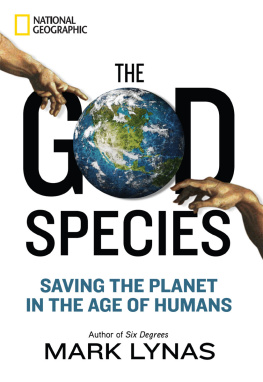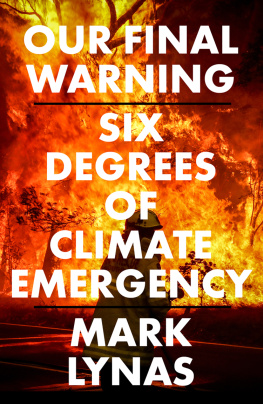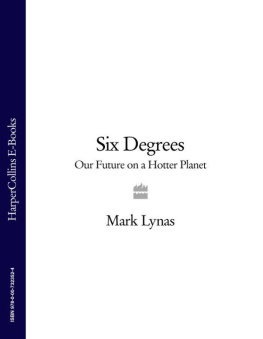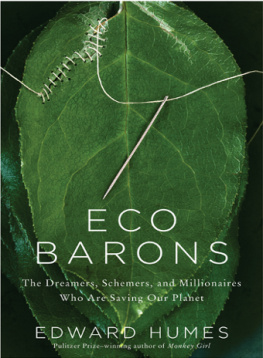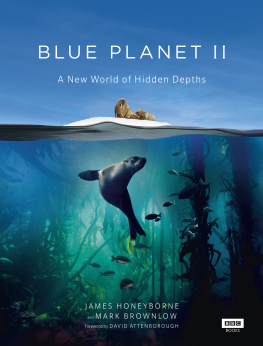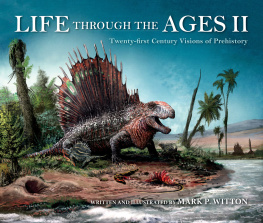Mark Lynas - The God Species: Saving the Planet in the Age of Humans
Here you can read online Mark Lynas - The God Species: Saving the Planet in the Age of Humans full text of the book (entire story) in english for free. Download pdf and epub, get meaning, cover and reviews about this ebook. year: 2011, publisher: National Geographic Society, genre: Romance novel. Description of the work, (preface) as well as reviews are available. Best literature library LitArk.com created for fans of good reading and offers a wide selection of genres:
Romance novel
Science fiction
Adventure
Detective
Science
History
Home and family
Prose
Art
Politics
Computer
Non-fiction
Religion
Business
Children
Humor
Choose a favorite category and find really read worthwhile books. Enjoy immersion in the world of imagination, feel the emotions of the characters or learn something new for yourself, make an fascinating discovery.
- Book:The God Species: Saving the Planet in the Age of Humans
- Author:
- Publisher:National Geographic Society
- Genre:
- Year:2011
- Rating:5 / 5
- Favourites:Add to favourites
- Your mark:
- 100
- 1
- 2
- 3
- 4
- 5
The God Species: Saving the Planet in the Age of Humans: summary, description and annotation
We offer to read an annotation, description, summary or preface (depends on what the author of the book "The God Species: Saving the Planet in the Age of Humans" wrote himself). If you haven't found the necessary information about the book — write in the comments, we will try to find it.
The God Species: Saving the Planet in the Age of Humans — read online for free the complete book (whole text) full work
Below is the text of the book, divided by pages. System saving the place of the last page read, allows you to conveniently read the book "The God Species: Saving the Planet in the Age of Humans" online for free, without having to search again every time where you left off. Put a bookmark, and you can go to the page where you finished reading at any time.
Font size:
Interval:
Bookmark:
High Tide: News from a Warming World
Six Degrees: Our Future on a Hotter Planet
Saving the Planet in the Age of Humans

Published by the National Geographic Society
1145 17th Street N.W., Washington, D.C. 20036
Published by arrangement with HarperCollins Publishers Ltd.
Copyright 2011 Mark Lynas. All rights reserved. Reproduction of the whole or any part of the contents without written permission from the publisher is prohibited.
Library of Congress Cataloging-in-Publication Data
Lynas, Mark, 1973
The god species: saving the planet in the age of humans / by Mark Lynas.
p. cm.
Includes bibliographical references and index.
ISBN: 978-1-4262-0898-0
1. Global warming. 2. Climatic changes. 3. Human beings--Effect of climate on. 4. Biotic communities. 5. Environmental protection. I. Title.
QC981.8.G56L976 2011
304.28--dc23
2011021049

The National Geographic Society is one of the worlds largest nonprofit scientific and educational organizations. Founded in 1888 to increase and diffuse geographic knowledge, the Societys mission is to inspire people to care about the planet. It reaches more than 400 million people worldwide each month through its official journal, National Geographic, and other magazines; National Geographic Channel; television documentaries; music; radio; films; books; DVDs; maps; exhibitions; live events; school publishing programs; interactive media; and merchandise. National Geographic has funded more than 9,600 scientific research, conservation and exploration projects and supports an education program promoting geographic literacy.
For more information, visit www.nationalgeographic.com .
National Geographic Society
1145 17th Street N.W.
Washington, D.C. 20036-4688 U.S.A.
For rights or permissions inquiries, please contact National Geographic Books Subsidiary Rights: ngbookrights@ngs.org
Interior design: Melissa Farris
For my family and other animals
This book is an unusual beast, because it is conceptually and scientifically based on the work of other people. It is traditional in acknowledgements for writers to gush that without so-and-so this book would never have been written, but in the case of Johan Rockstrm and his planetary boundaries co-authors this is literally true. The basic concept is entirely theirs, as are the scientific definitions and quantifications attached to each one. However, the evidence supporting the boundaries presented in this book is largely the fruit of my own research, and the social and economic implications I suggest that the boundaries may carry are my assertions alone. I have no idea whether Johans co-authors support nuclear power, carbon offsetting, or a variety of other controversial proposals that I explore or endorse in this book. They have laid the foundations, however, for a new and better way of looking at our planet, and for that we are all deeply in their debt.
I am particularly grateful to planetary boundaries co-author Professor Diana Liverman, a longtime friend of my family, who invited me to the first scientific workshop on the boundaries concept at the Tllberg Forum in Sweden. That kind gesture set me on this road, and Diana has also been consistently supportive throughout the long process of writing and publishing. As a Visiting Research Associate at Oxford Universitys Environmental Change Institute (which Diana recently headed) I have also benefited enormously from all the research facilities, expert lecturers, and contacts of a world-class university. Most important of all was continuing access to the Radcliffe Science Library, both on-site and remotely: I am deeply grateful to all the helpful staff at the RSL for their assistance and the computing staff who helped keep my VPN connection working through the hard times.
As always, I am indebted to my loyal and very companiable agent Antony Harwood, whose continuing input has been invaluable. The long, multiyear process of writing a book inevitably has its ups and downs, and I could not ask for a better agent or friend. At my publisher Fourth Estate, my editor Robin Harviehimself an accomplished authorplayed the invaluable role of helping me see that this book was not quite finished when I thought it was, and has improved the end result immeasurably in the process. Copy editor Steve Coxs succinct additions and deletions have benefited the manuscript hugelyI can only hope that one day I learn how to get that and which the right way round.
I dont dare embark on a long list of friends and colleagues who have helped in case I leave someone important out. You know who you all are. Thank you. My wife Maria deserves a special mention though, as do my children Tom and Rosa. It is themand our nonhuman friends of all kingdoms and phylato whom this book is dedicated.
Then Man said: Let there be life. And there was life.
Thunderbolts do not come much more momentous than this: In May 2010, for only the second time in 3.7 billion years, a life-form was created on planet Earth with no biological parent. Out of a collection of inanimate chemicals an animate being was forged. This transformation from nonliving to living took place not in some primordial soup, still less the biblical Garden of Eden, but in a Californian laboratory. And the Divine Creator was not recognizably godlike, despite the beard and gentle countenance. He was J. Craig Venter, a world-renowned biologist, highly successful entrepreneur and one of the first sequencers of the human genome. At the ensuing press conference, this creator and his colleagues announced to the world that they had made a self-replicating life-form out of the memory of a computer. A bacterial genome had been sequenced, digitized, modified, printed out, and booted up inside an empty cell to create the first human-made organism. As proof, the scientists wielded photographs of the microscopic Mycoplasma mycoides JCVI-syn1.0 cells, busily obeying the original divine command to be fruitful and multiply in one of the J. Craig Venter Centers many petri dishes. The new discipline of synthetic biology had come of age.
Forget all your fears about genetic engineering (GE); synthetic biology makes GE look as quaint and old-fashioned as a horse and cart at a Formula One rally. Old-style biotech was about mixing and rearranging small numbers of existing natural genes from different species and hoping that the right thing happened. Synthetic biology is an order of magnitude more powerful, for it gives humanity the potential to design and create life from scratch. Venter and his team didnt quite achieve that: Their synthetic genome, after being stitched together with the help of some well-trained yeast, was transplanted into the empty cell of a closely related bacterium that was arguably already alive, at least in form if not in function. But the structure the new cells took was that prescribed by the scientists, featuring specially designed DNA watermarks that included three quotes, the names of the researchers on the project, and an email address for anyone clever enough to successfully decode and sequence the new genome.
The next steps for Venters teamand other competitors rushing to pioneer novel methods in the same fieldpoint the way towards a new technology of awesome power and potential. Once the function of every gene is understood, scientists can begin to build truly new organisms from scratch with different useful purposes in mind. Microbial life-forms could be designed to create biofuels or new vaccines, to bioremediate polluted sites, or to clean water. In the hands of a modern-day Bond villain, they might also be used to forge virulent new superbugs that could wipe out most of the worlds population. But the technology per se is ethically inert; it is just a tool. The purpose of a machine depends upon whose hands are wielding its power. Synthetic biology reduces the cell to a machine, whose componentsonce properly understoodcan be assembled like blocks of Lego. Why build a robot out of perishable steel and plastic when you can build a bio-bot that feeds itself, carries out its prescribed task, heals any injuries, and creates near-identical copies of itself with no outside intervention?
Font size:
Interval:
Bookmark:
Similar books «The God Species: Saving the Planet in the Age of Humans»
Look at similar books to The God Species: Saving the Planet in the Age of Humans. We have selected literature similar in name and meaning in the hope of providing readers with more options to find new, interesting, not yet read works.
Discussion, reviews of the book The God Species: Saving the Planet in the Age of Humans and just readers' own opinions. Leave your comments, write what you think about the work, its meaning or the main characters. Specify what exactly you liked and what you didn't like, and why you think so.

